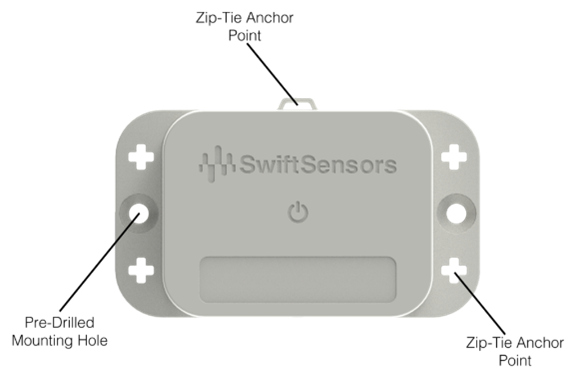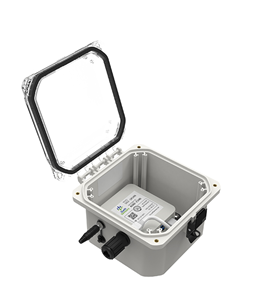Businesses in many industries turned to remote sensor networks during the pandemic to help manage employee and customer safety and to allow remote monitoring of production and processes. The pivot to IoT solutions also helped many businesses operate more efficiently and provide better customer service, which means IoT is becoming a must-have in many sectors.
Thanks in part to the increased demand for connected machines, many companies are retrofitting their current equipment with IoT sensors, rather than investing in new smart equipment. The industrial internet of things (IIoT) device market is now growing by more than 16% a year and the internet of medical things market is exploding as hospitals and physicians adopt connected devices like insulin pumps and remote heart monitors for better patient care.
Meanwhile, businesses are finding new IoT applications to save money by making building management systems smarter and more efficient. Even insurance companies are turning to IoT solutions to set commercial property insurance rates more accurately.
Someone has to install, maintain, monitor and respond to these systems, and many organizations don’t have the in-house resources to handle it all themselves. MSPs have an opportunity to move into or expand their managed IoT service offerings using low-cost remote sensors and consoles that manage sensor data that’s stored in the cloud. Here’s what those opportunities can look like.
Installing IoT networks
Setting up a network of remote sensors for a client’s restaurant, health care clinic, factory or campus typically only takes a few hours, although large installations with hundreds of sensors can require more time.

Unlike legacy wired sensors, remote sensors like our matchbox-size, water-resistant, dustproof Series 3 devices can be mounted virtually anywhere with zip ties, screws or double-stick tape, which means they can go in places where wired sensors aren’t practical, including washdown areas. One touch connects them to the wireless gateway.

Our wireless gateways feature the same easy installation options as our sensors, and our SG3-1010 gateway can be encased in our water-resistant enclosure for wet areas.
With the sensors feeding data to the gateway and the gateway relaying data to the cloud, you’re ready to help clients set up their Cloud Console, including employee permissions, custom dashboards, sensor thresholds and alerts.
Maintaining IoT networks
IoT equipment management is easy when the gear is built to last. For example, our Series 3 sensors can operate for six to eight years on one battery. When they do run out of power, or if they’re ever damaged, it’s fast and easy to replace them.
MSPs can also keep up with notifications from the IoT device manufacturer regarding security updates, firmware updates and new features, so that the client’s system is always up to date.
Equipment operation
With remote vibration sensors on motorized equipment and remote temperature sensors in coolers and freezers, MSPs can keep tabs on real-time equipment operation and conditions for customers.
MSPs and their customers can set alert thresholds to send a text, email or voice call alert when equipment operates out of range. This can be especially helpful when a customers’ facility is closed or has minimal staff on premises. For example, a data center with only a few people on-site might not discover an overheating server until it causes a problem. But with remote temperature alerts, the MSP can see the issue as soon as the server starts operating outside its acceptable temperature range and notify the customer before the server fails.
MSPs can install several types of remote sensors in critical locations to create a layered data set about the equipment’s operation. For example, a pharmacy freezer stocked with vaccines might require a wireless temperature sensor, a remote door sensor and a wireless video camera so that MSPs and pharmacy managers can track operating temperature, freezer door status and access to the freezer. Then, if a temperature alert comes in, the MSP can check the other device data to see if the freezer door is open or if someone has tampered with the equipment.
Environmental condition monitoring
MSPs can also help customers keep tabs on environmental conditions in their facilities using their IoT network. For example, museums often rely on manual employee checks of temperature and humidity to protect the art and artifacts in their collections. But combination temperature, humidity and dewpoint sensors can automate that task, free up employee time on data collection, and turn over monitoring to the MSP.
Data analytics and planning
IoT networks do more than provide valuable real-time data. They also store and analyze that information in the cloud, to generate historical data charts and trend projections. MSPs can help clients get the most value from this information by helping them interpret and apply those analyses.
For example, g-force vibration sensors on industrial routers can identify when the equipment is being operated outside its ideal range. The MSP can flag that for the customer so they can identify the cause of the problem, perhaps a new employee who needs more training on using the machine. That data-driven intervention can help extend the life of the equipment, prevent unplanned downtime and increase efficiency.
Want to learn more about growing your managed service partner business with wireless sensor networks? Visit our reseller resource page.
